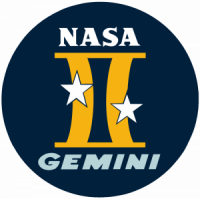Gemini Missions

Credit: NASA
The Gemini missions were NASA's human spaceflight programme in the early 1960s. Gemini took place during the Space Race. This was a fight between the USSR and the USA to be the best at spaceflight. It was a race against time to be the first to put a human into space and then on the Moon.
The goal of Gemini was to prepare for NASA's later Apollo missions to land people on the Moon. The Gemini spacecraft could do more than the earlier Mercury missions. It could change what orbit it was in as well as the way it was facing. This would be vital for getting to and from the Moon. Gemini also practised docking with another spacecraft. This is when a craft joins with other whilst in space.
NASA named the programme Gemini, Latin for twins. They chose this name because the spacecraft could carry 2 astronauts. The earlier Mercury capsule could only hold 1 astronaut. 10 Gemini crews flew between 1964 and 1965. The crews included Neil Armstrong, Buzz Aldrin and Michael Collins. Those 3 astronauts would go on to crew Apollo 11, the first mission to land on the Moon.

